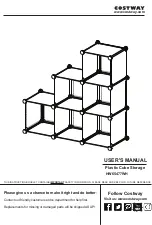
Redundant Electronics Configuration Examples
D-2
StorageTek SL8500 User's Guide
Redundant Electronics Configuration Examples
Each library controller card requires its own unique IP address. For dual TCP/IP, each
card requires two unique IP addresses: one for the primary port 2B and one for the
secondary port 2A. Therefore, a library with RE and dual TCP/IP requires four unique
IP addresses.
On each controller card, port 2B and 2A must be on different broadcast domains.
However, port 2B on the active card and port 2B on the standby card can be on the
same broadcast domain. The same is true for the 2A ports.
Figure D–1
Redundant Electronics Configuration Examples
See also:
What Occurs During a Failover
In a controller card failover, the active library controller attempts to complete all
in-process jobs and copies the cartridge database to the standby controller card. If the
database cannot be copied (usually only in a sudden failure), you must perform an
audit after failover (see
on page 10-1). The library returns any
in-transit cartridges to their home slots. The library places any cartridges it cannot
return to a home slot in a system slot for host recovery (see the host software
documentation).
After all in-process jobs complete or time out, the cards switch roles. The standby
controller becomes active and the previously active controller becomes the standby. If
the previously active controller cannot bring up the standby software, the controller
enters a fault state.
Effect of a Failover on Users
■
Users of tape management software (Symantec or Virtual Storage Manager) do not
see an interruption.
■
HLI host applications queue requests during the failover process for completion
after the failover switch. For ACSLS, only mount and dismount requests are
affected (see the host software documentation).
■
SLC and CLI connections are terminated. You must re-establish connections to the
library using the IP address or DNS alias of the new active library controller (the
former standby controller).
Summary of Contents for SL8500
Page 1: ...1 StorageTek SL8500 User s Guide E20869 12 March 2017...
Page 12: ...xii...
Page 16: ...Installing Web launched SLC 1 4 StorageTek SL8500 User s Guide...
Page 32: ...Maximizing Library Performance when Partitioning 5 6 StorageTek SL8500 User s Guide...
Page 38: ...Guidelines for using CAPs 6 6 StorageTek SL8500 User s Guide...
Page 46: ...Maximizing Library Performance Though Cartridge Placement 8 6 StorageTek SL8500 User s Guide...
Page 62: ...Monitoring Library Events 12 6 StorageTek SL8500 User s Guide...
Page 66: ...Rebooting a Robot 13 4 StorageTek SL8500 User s Guide...
Page 80: ...A 2 StorageTek SL8500 User s Guide...
Page 94: ...whereAmi B 14 StorageTek SL8500 User s Guide...
Page 108: ...Firmware Upgrades with RE D 4 StorageTek SL8500 User s Guide...
Page 138: ...World Wide Name Glossary 10...
















































